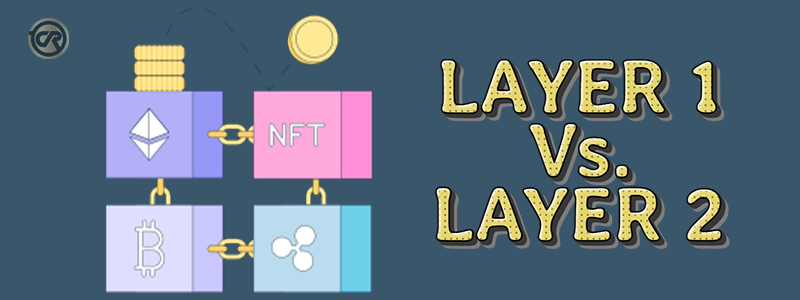
There is a large number of
cryptocurrencies and blockchains currently available. With these numbers, you
might not know if you are using the Layer 1 or Layer 2 blockchain.
Nevertheless, it is worth understanding the system you are investing
in.
What Is the Difference Between
Layer 1 And Layer 2 Blockchains?
Layer 1 is the main structure
of the blockchain network. In other words, it is the base level of blockchain
architecture. Examples of Layer 1 blockchains are Bitcoin, Avalanche, BNB Chain,
Litecoin, and Ethereum.
In contrast, Layer 2 is the
network built on top of other blockchains. Since Bitcoin is a Layer 1, an
example of a Layer 2 is the Lightning Network that runs on top of Bitcoin. Another example of a
Layer 2 is Ethereum Plasma which runs on top of the Ethereum blockchain.
Many businesses are also
developing blockchain network scalability improvements which can be grouped
into Layer 1 and Layer 2 scaling solutions.
Layer 1 would be the primary
highway in the world of blockchain technology. It is the main network. Layer 2
solutions in contrast are the additional service roads. It is a secondary
network created to improve the overall capacity of the main network.
1.
Layer
1 scaling solution
In the decentralized
ecosystem, a Layer 1 network is a blockchain. By supplementing the base layer
of the blockchain’s protocol, Layer 1 blockchains improve scalability. The
creation and implementation of several methodologies to directly improve the
scalability of blockchain networks are ongoing.
Layer 1 solution works by
directly changing the rules of the protocol to improve transaction speed and
capacity while accommodating more data and users. To enhance complete network
throughput, the Layer 1 scaling solution may include increasing the rate at
which blockchains are confirmed or increasing the amount of data in each
blockchain.
2.
Layer
2 scaling solutions
Layer 2 improves efficiency by
working on the native layer. By transferring a portion of Layer 1 blockchain’s
transactional burden to the system of another architecture, Layer 2 effectively
offloads transactions. Layer 2 then handles the processing load which reports
to Layer 1 for finalization of the result.
Network congestion is reduced
because Layer 2 handles the majority of the data processing load. This makes
Layer 1 less congested and more scalable. Lightning Network is an example of a
Layer 2 scaling solution because it takes the load from Bitcoin - it reports to
Bitcoin still.
The outcome is an increase in
the speed of the Bitcoin blockchain's processing. Additionally, the Lightning
Network integrates smart contracts into the Level 1 Bitcoin blockchain.
Why is scalability important?
Blockchain technology provides many benefits, including improved recordkeeping, increased blockchain security, and hassle-free transactions. Nonetheless,
scalability is still a major concern considering whether Layer 1 or Layer 2 is
preferable for new blockchain networks.
To complete transactions,
every blockchain network uses a decentralized system. The various steps required for each blockchain transaction often consume a significant amount of
processing power and time.
Consider an instance of a
blockchain network being clogged with transactions stacked on top of each
other. The application in this case will not be able to fulfill the transaction
requests from all users. This will result in inequity in user experience. For
this reason, scalability is a vital component that is necessary for the future
of blockchain networks.
Conclusion
In blockchain technology, the
term scaling is an increase in the rate of system throughput as determined by
the number of transactions performed per second. As a result of the increase in
the usage of cryptocurrency and blockchain, it is now important to build
blockchain layers for recordkeeping, improved network security, and other
purposes.
There is a large number of cryptocurrencies and blockchains currently available. With these numbers, you might not know if you are using the Layer 1 or Layer 2 blockchain.

Written by Sam